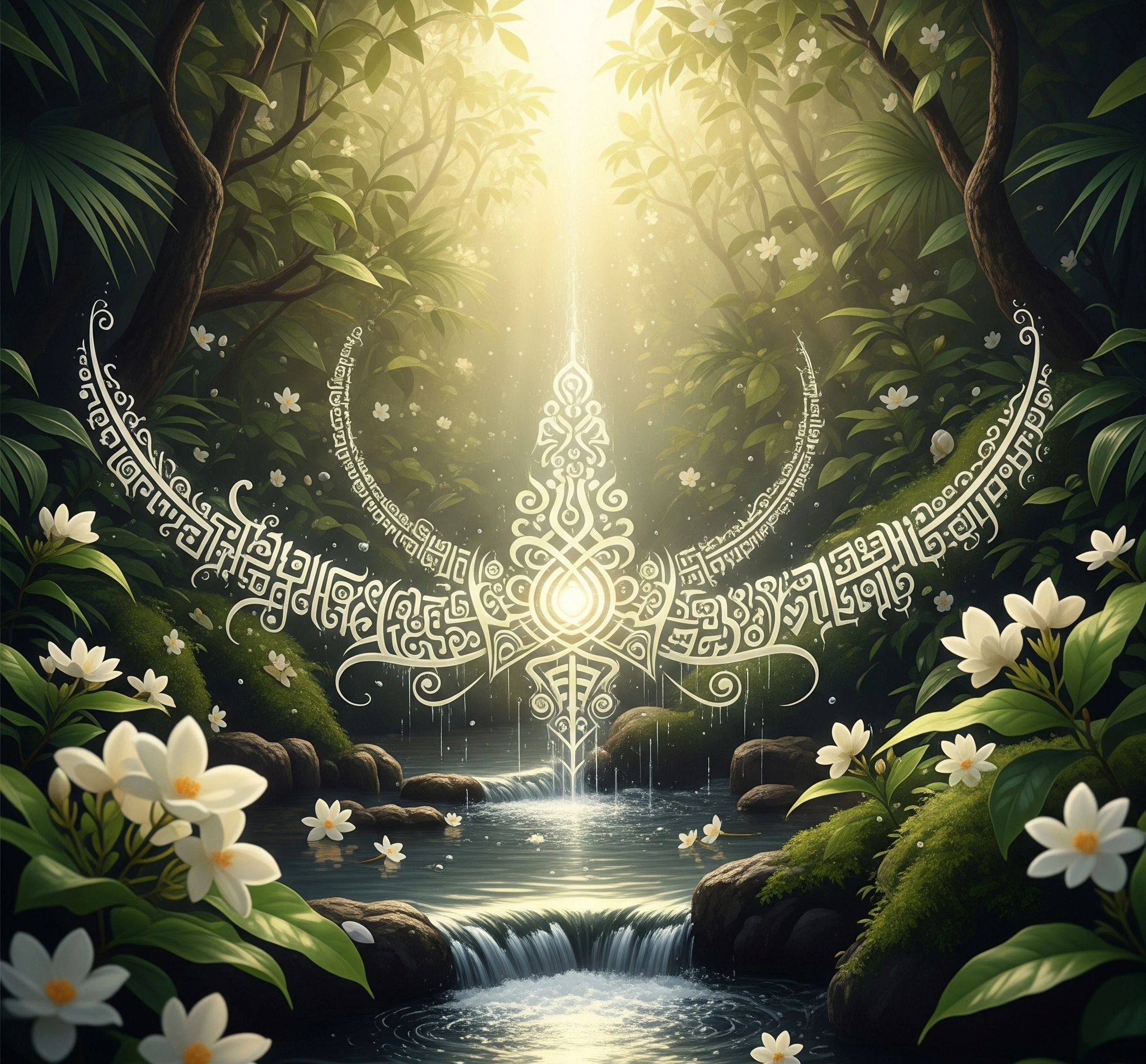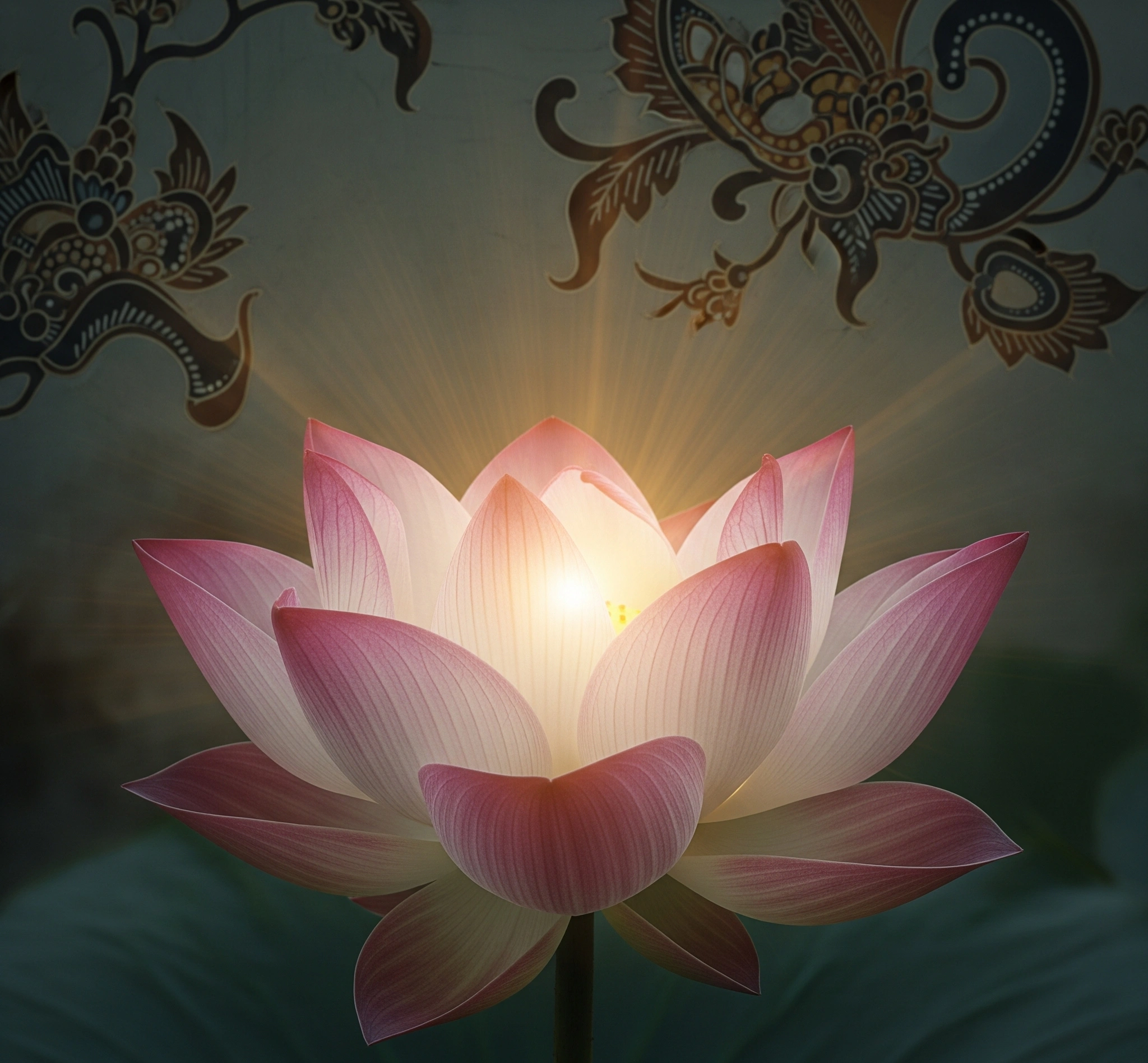The Ancient Whisper: A Timeless Quest for Peace

In our hyper-connected world, we face a constant barrage of information. This often sparks a desire for inner peace and a deeper understanding of existence. We seek meaning beyond the tangible, longing for a profound connection. For many in Java, Indonesia, this quest leads to **Kejawen**, a rich spiritual landscape. Kejawen is a syncretic belief system deeply rooted in Javanese tradition. At its heart lies the practice of **mantra and meditation**. These are not just rituals; they are powerful tools for self-discovery and communion with the universe. This exploration delves into the core of these practices, offering unique insights into their significance and application within Kejawen.
Kejawen’s Foundation: Deconstructing Its Core Beliefs
Kejawen is not a codified religion. Instead, it serves as a way of life, a spiritual ethos woven into the very fabric of Javanese culture. Its architecture rests on several key pillars. First, animistic beliefs honor ancestral spirits and nature’s inherent power. Next, Hindu-Buddhist influences are evident in its deities and philosophical concepts. Finally, Islamic mysticism (Sufism) contributes to its emphasis on inner experience and the oneness of existence. Central to Kejawen is the concept of **kawula-Gusti**. This describes the intimate relationship between the individual (kawula) and the Divine (Gusti). This relationship signifies interconnectedness, not subservience. Indeed, the divine spark resides within each person.
Mantra and meditation serve as vital conduits in nurturing this *kawula-Gusti* relationship. Kejawen mantras, often in ancient Javanese or Sanskrit, are more than mere recited words. They hold spiritual power (*kesakten*). Practitioners believe these mantras vibrate with cosmic energy. Thus, they can influence both the inner self and the external world. Meditation, known as *semedi* or *tapabrata*, involves focused concentration and contemplation. The goal is to achieve inner stillness and heightened spiritual awareness.
The Fabric of Practice: Understanding Kejawen’s Ecosystem
Mantra and meditation practices are deeply embedded in Javanese cultural life within Kejawen. They are not limited to temples or formal religious settings. Instead, they permeate various aspects of daily life. This includes traditional ceremonies and rituals, as well as personal spiritual endeavors. Often, mantras and meditative techniques pass down through informal mentorship. This happens within families or from spiritual guides known as **sesepuh** or **dukun**. These figures play a crucial role. They guide individuals on their spiritual journey, imparting wisdom. Furthermore, they empower practitioners with specific mantras tailored to their needs and spiritual development.
The context for these practices is also significant. Practitioners often choose sacred places for meditation. These might be ancient temples (*candi*), natural sites imbued with spiritual energy (*tempat keramat*), or even designated spaces within one’s home. The time of day, the lunar cycle, and other cosmological factors can also influence the practices’ effectiveness and intensity. Moreover, Kejawen often incorporates elements of asceticism (*tirakat*). This includes fasting or abstaining from worldly pleasures. Such practices purify the body and mind, preparing them for deeper spiritual experiences during meditation.
Experiencing Kejawen: A Practitioner’s Journey
Consider the story of Pak Budi, a middle-aged farmer from a rural village in Central Java. Worries about his family’s well-being and the harvest’s uncertainty burdened him. So, he sought guidance from Mbah Wardi, his village’s respected *sesepuh*.
Mbah Wardi recognized Pak Budi’s sincere desire for inner peace. Therefore, he initiated Pak Budi into a specific Javanese mantra practice related to grounding and resilience.
Mbah Wardi explained the mantra’s purpose. When recited with focused intention during morning meditation by the river, it would help Pak Budi connect with the earth’s energy and cultivate inner strength. He emphasized the importance of **rasa** (feeling). This meant not just uttering the words, but deeply internalizing their meaning and vibrational essence. Initially, Pak Budi struggled to quiet his racing thoughts. However, with consistent practice, he began to experience profound stillness. He followed Mbah Wardi’s guidance, focusing on his breath and the mantra’s subtle vibrations. He described a sense of calm washing over him, replacing anxieties with quiet confidence.
Over time, Pak Budi noticed a shift. Not only did his inner state change, but also his perception of challenges. He approached his work with renewed focus and resilience. Consequently, the anxieties that once plagued him diminished. This personal experience, shared by many Kejawen practitioners, highlights the transformative potential of mantra and meditation. This transformation occurs when practiced with sincerity and proper guidance. The power resides not just in the words or the technique, but in the intention and the connection it fosters with oneself and the universe.
The Core Revelation: Unveiling Unique Insights
Kejawen mantra meditation stands apart from other contemplative traditions. Its unique connection to the Javanese worldview truly distinguishes it. This worldview emphasizes **harmony, balance, and the interconnectedness of all things**. Unlike some practices that focus solely on individual enlightenment, Kejawen meditation often includes a social and ecological dimension. The goal isn’t just personal transcendence. Rather, it is the cultivation of inner peace that radiates outwards. This contributes to the harmony of the community and the natural world.
Furthermore, the power attributed to Kejawen mantras often links to specific spiritual entities or natural forces. Practitioners select and practice a particular mantra to invoke these entities’ blessings or guidance. This fosters a deeper relationship with both spiritual and natural realms. This animistic undercurrent, combined with Hindu-Buddhist and Sufi influences, gives Kejawen mantra meditation its unique flavor and purpose. Ultimately, it is a practice deeply embedded in a specific cultural and spiritual context, making it distinct from more universalized forms of meditation.
Navigating Kejawen: A Practical Guide
For those seeking to understand or even explore mantra and meditation within the Kejawen belief system, a few guiding principles can help:
- **Respect and Humility:** Approach the tradition with genuine respect for its cultural and spiritual significance. Recognize that it is a living tradition with deep roots.
- **Seek Guidance:** If possible, connect with a trusted *sesepuh* or practitioner. They can provide authentic guidance and impart knowledge of specific mantras and techniques.
- **Cultivate *Rasa*:** Focus not just on reciting mantras. Instead, cultivate a deep feeling and understanding of their essence.
- **Consistency and Patience:** Like any spiritual practice, the benefits of mantra and meditation in Kejawen unfold gradually. This requires consistent effort and patience.
- **Integration with Daily Life:** Strive to integrate the principles of inner peace and harmony cultivated through meditation into your daily interactions and actions.

A metaphorical image representing the blossoming of inner peace and enlightenment.
FUTURE VISION & AUTHOR BIO
In our increasingly complex and fragmented world, Kejawen’s ancient wisdom offers a valuable path. Its emphasis on inner harmony through mantra and meditation leads towards personal well-being and a more balanced existence. While Javanese society’s outward forms continue to evolve, Kejawen’s underlying spiritual principles remain vital. These principles include deep respect for tradition and the interconnectedness of all things. Thus, they provide a strong source of strength and meaning for many. The whisper of this ancient wisdom continues to resonate, inviting individuals to discover their inner peace and spiritual depth.